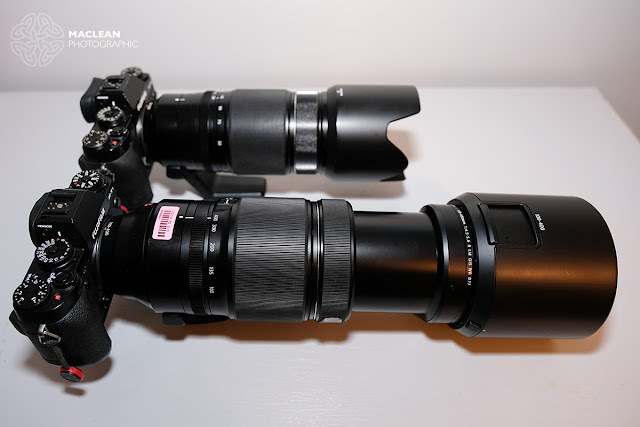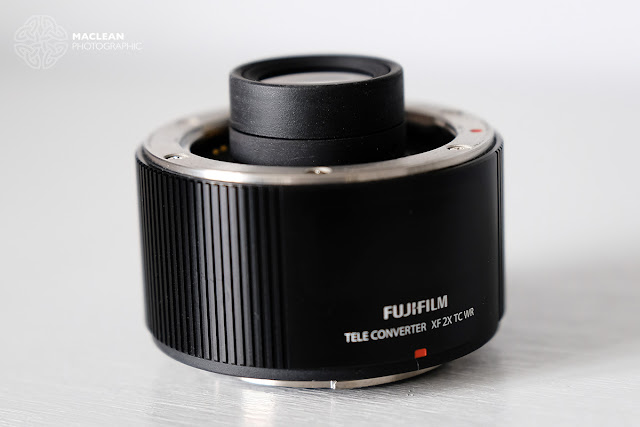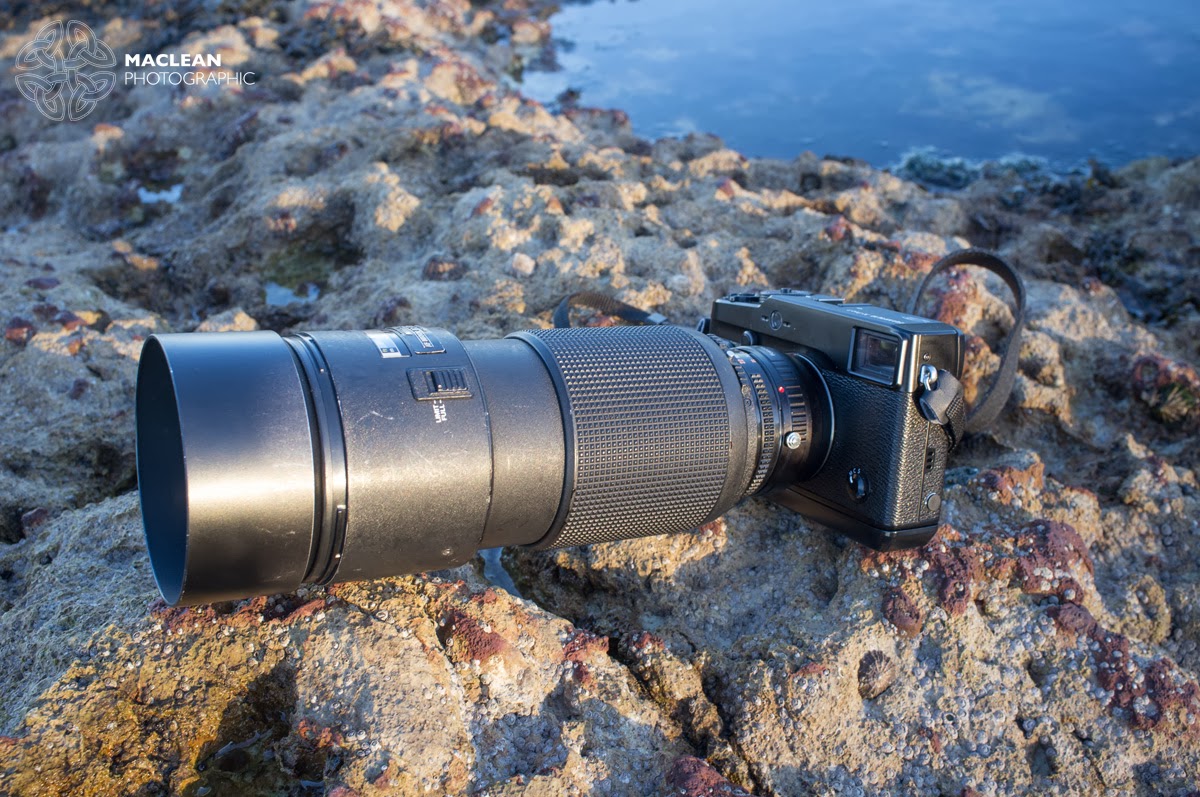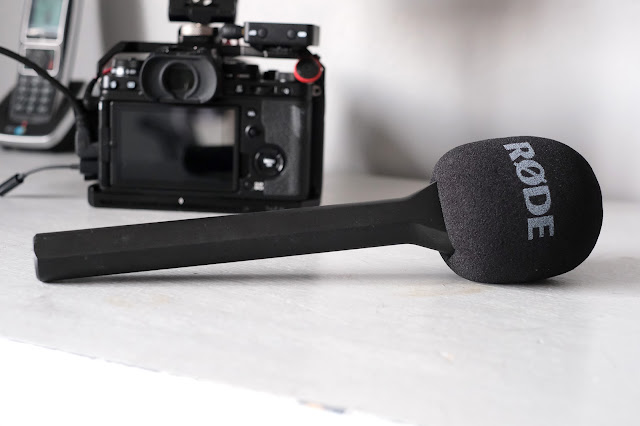REVIEW: The New XF100-400mm f4.5/5.6R LM OIS WR Telephoto Zoom Lens
Well I can finally unveil my findings on three months of testing the new Fujinon superzoom for the Fujifilm X-Series.
Fujifilm Japan asked me and three fellow X-Photographers John Rourke, Andrew Hall and Dirk Bogaerts to try a very early prototype of the lens at the WEC event at Fuji Speedway last October. The results were very impressive despite the fact that Fujifilm had only assembled the lenses we were using two days prior. We fed back our initial findings on returning the lenses to Tokyo on the Monday after the race.
CLICK HERE to watch the video featuring the four photographers testing the 100-400mm shown at the press conference on the 15th January.
We received updated lenses for the season finale in Bahrain in November and we have been using these prototypes over the past two months and giving our feedback prior to the launch of the lens in Tokyo last Friday. At the press conference I was on stage talking about my use of this lens and one of my images was printed and hung above the stage for all the delegates and press to see.
I have used the 100-400mm for motorsport, wildlife and landscape during the past couple of months and I have to report that I am extremely impressed by this lens.
The quality of the images produced by the 100-400mm is on a par with every other Fujinon lens in the XF range and the build quality of lens is superb as well. There is no denying that this is a big lens but it is nicely balanced on the X-T1.
I have even used it on the new X-Pro2 for shooting wildlife images and it doesn't feel front heavy even on the rangefinder styled X-Pro2. I do recommend shooting with a battery grip fitted to the X-T1 but it isn't absolutely necessary.
This lens is also Weather Resistant, as denoted by the WR on the lens. This is imperative for anyone shooting sport or wildlife and I have used it in challenging conditions (desert conditions in Bahrain and wet and windy conditions in Scotland) so I can report first hand that the 100-400mm does keep the moisture and dust at bay.
The f5.6 maximum aperture can be limiting when shooting sport or wildlife in low light conditions. The 5 stop OIS system will allow you to hand hold this lens down to very low shutters speeds - I've shot down to 1/60s at 400mm without any problems - but it doesn't help if the subject is moving quickly, you still need a fast shutter speed to freeze the action. The only way to get around this is to crank up the ISO and while the X-Series handles noise very well this isn't always the best solution when working as a professional photographer.
However having said that, the 100-400mm is very capable of producing the images I need to sell and I am extremely pleased that this lens has finally made it into production.
Size
The XF100-400mm is a big lens and also extends when moving from the 100mm to 400mm focal length. As a size comparison I have placed it in the image above alongside the XF50-140mm f2.8 and as you can see there is a big difference in size when the focal length is at 400mm. However the lens is quite balanced on the X-T1 though I do recommend using a battery grip.
Pulling Power
The XF100-400mm is by far the longest lens in the XF line up so far with an equivalent focal length of 150mm to 600mm, which with the newly launched 1.4x converter extends this range to 140mm to 560mm (210mm to 840mm in full frame terms).
Optical Image Stabilisation
The XF100-400mm boasts a class leading Optical Image Stabilisation system and I found that it does work exceptionally well in most situations. I took some video during the WEC test day in Bahrain, shooting short videos without the stabilisation and then some more video with the OIS switched on. The difference was startling, it was like I had suddenly started to use a tripod, it was very stable.
Aperture Ring
The R in the lens name denotes that this lens has a separate aperture ring like all XF lens (with the exception of the 27mm f2.8). However unlike the 16-55mm and 50-140mm the ring is unmarked (like the 55-200mm and 18-55mm) because of the variable aperture. This isn't a problem because the aperture is displayed on the rear screen or in the viewfinder.
 |
| GP2 at Bahrain International Circuit @400mm + 1.4x converter (X-T1) |
Auto Focus
The autofocus system on the XF100-400mm performed well. When shooting at the 400mm end of the zoom range it did ‘hunt’ and fail to lock on very occasionally, but in the situations that this happened it would’ve been the same for similar lenses from other manufacturers (not enough contrast in the subject or sun reflecting off the shiny bodywork of a car).
It also failed on occasion to follow focus but that was down to the fact that I had MS + ES selected and AF-C is disabled if MS+ES is selected. I have now reset all my cameras to MS only.
I have yet to shoot any motorsport with the X-Pro2 and XF100-400mm combined but the AF on the X-Pro2 does feel snappier than the X-T1 when shooting wildlife and the surfers in Belhaven Bay (see images below). I look forward to trying it on some fast moving cars in the near future.
1.4x Converter
Using the XF100-400mm with the 1.4x converter was very good. Like the 50-140mm f2.8, quality of the images were unaffected by the use of the 1.4x converter and the increase in the focal length is useful for sport and wildlife. The only downside is the fact the maximum aperture with the 1.4x converter in place is f8, which can be limiting in poor lighting conditions.
Little Extra Touches
The lens hood on the XF100-400mm had a push button lock to stop it rotating and falling off. I wish all lens hoods had this feature.
The lens hood also has a window to access a polarising filter if one is fitted, this feature was first fitted to the lens hood of the 50-140mm f2.8. Unlike the 50-140mm, which is removed and stored (and then lost), the window on the 100-400mm lens hood slides forward and is retained in the lens hood, so it wont get lost. This is a big improvement and should be incorporated into a redesigned lens hood for the 50-140mm.
The 100-400 is the first Fujinon lens where the lettering is not around the front element but is on the top of the barrel. Anyone using filters on Fujinon lenses will at some point come across the phenomenon where the letters are reflected in the back of the filter and are displayed on the final image. This is not a problem when using filters on the XF100-400mm.
The lock on the zoom to stop the lens barrel extending when carrying it is useful.
The focus limit switch is also useful to limit the range of the focus travel and aid in locking the focus faster.
CONCLUSION
The 100-400mm is aimed at sports and wildlife photographers and the quality of the images the lens produces is on a par with the other Fujinon lens in the X-Series line up.
The AF is snappy and, apart from the occasional ‘hunting’ issue, works extremely well.
The OIS was amazing and is something that will attract a lot of photographers to this lens.
For motorsport in particular trying to capture cars moving at over 200kph was going to be a tough test for the XF100-400mm. When I used the lens trackside in Bahrain the lens was able to capture some great images, even with the 1.4x converter fitted to increase the focal length to 560mm.
On the grid and in the pitlane the 100-400mm worked perfectly and is a great performer in these environments.
The results when shooting wildlife were also excellent and I managed to take images of birds in the air without any problems. I also enjoyed using this lens at a more leisurely pace for shooting landscapes.
The f5.6 maximum aperture is going to be a factor for professional use, especially for sports photographers who are used to using f2.8 lenses. But that is a bit like comparing apples and pears, this lens is not being specifically aimed at professionals working in those fields. However my findings are that the 100-400mm can be used successfully to capture sports images but you have to accept the limiting factor of the f5.6 aperture.
However you have to remember that the street price for a Canon 400mm f2.8 is around £7700 and the XF100-400mm is currently priced at £1399 for pre orders and I am sure that price will drop slightly once the lenses start hitting the shops. For a more direct comparison the very similar Canon 100-400mm f4.5/f5.6 is priced at £1799.
The 100-400mm lens is a great addition to the XF lens line up and I enjoyed using it for sport, wildlife and landscape photography for both my professional and personal work. I can highly recommend this lens to anyone needing a long lens for their X Series camera.
CLICK HERE for more information on the XF100-400mm f4.5/5.6R LM OIS WR, which includes some high resolution sample images to download.
CLICK HERE for more information on the XF100-400mm f4.5/5.6R LM OIS WR, which includes some high resolution sample images to download.
NOTE: This is not a technical review but my professional opinion as a photographer using this lens for professional and personal work over the past three months. For a technical review please visit one of the websites that specialises in this such as DPReview
 |
| Tantallon Castle, East Lothian @100mm (X-T1) |
 |
| Tantallon Castle, East Lothian @400mm (X-T1) |
 |
| Sunset in the Highlands of Scotland @400mm (X-Pro2) |
 |
| Kerbs at Bahrain International Circuit @400mm (X-T1) |
 |
| Sunset at Bahrain International Circuit @400mm + 1.4x Converter (X-T1) |
 |
| In the Pitlane at Bahrain International Circuit @400mm (X-T1) |
 |
| GP2 at Bahrain International Circuit @400mm + 1.4x converter (X-T1) |
 |
| WEC Testing at Bahrain International Circuit @400mm (X-T1) |
 |
| Cormorant in Dunbar Harbour @400mm (X-T1) |
 |
| Homers Heading Home to Dunbar in choppy conditions @400mm (X-T1) |
 |
| Tanker moored off the beach at Belhaven Bay @400mm (X-T1) |
 |
| Heron at Belhaven Bay @400mm (X-T1) |
 |
| Little Egret at Belhaven Bay @400mm (X-T1) |
 |
| Little Egret at Belhaven Bay @400mm (X-T1) |
 |
| Little Egret at Belhaven Bay @400mm (X-T1) |
 |
| Big waves at Belhaven Bay @400mm (X-Pro2) |
 |
| Surfer at Belhaven Bay @400mm (X-Pro2) |
 |
| Surfer at Belhaven Bay @400mm (X-Pro2) |
-------------------------------------------------------------------------------------------------------------
MacLean Photographic run Workshops in East Lothian and the Borders of Scotland. CLICK HERE for more details and availability
Jeff Carter is an Official Fujifilm X Photographer and was named as a Fujifilm brand ambassador in June 2015. In 2016 he worked with the company on the launches of the Fujifilm X-Pro2 in Tokyo and the Fujifilm X-T2 in Paris in July 2016. You can view his profile and gallery on the Fujifilm website HERE










Thanks for this review. It's about the fourth I've read on this lens so far, and it really seems like Fuji have nailed it given the price/weight/size parameters
ReplyDeleteNick
This comment has been removed by a blog administrator.
ReplyDeletei've heard mixed reviews of the focusing speed. I would like to take it to the race track. Any advice? Does switching to the 5 meters + setting help keep it from searching to focus?
ReplyDeleteGlenn, I keep the switch set to 5m-Infinity when shooting motorsport. The focus speed also depends on which camera body you have it attached to. The X-Pro2 is much faster at focusing than the X-T1 and the X-T1 is better than the other X-Series cameras. Also make sure you have the Power Management setting on 'High Performance'. Also note that with the shutter set to MS + ES the continuous focus is impaired so make sure you have MS only selected. Check out my review from last weeks WEC test at Paul Ricard in France - http://macleancomms.blogspot.co.uk/2016/03/using-14x-converter-with-fujinon-lenses.html and http://macleancomms.blogspot.co.uk/2016/03/the-prologue-start-of-2016-fia-wec.html
DeleteHi Jeff,
ReplyDeleteas first thanks for this review. I have a couple of questions for you. You have used the 100-400 for motorsport photography! Well I am a professional MotoGP photographer, and I will test the Fujifilm XPRO2 with both 50-140 and 100-400 in the next round. I will try also the 1.4x converter. Can you please tell me how this couple works in terms of AF speed taking in mind that at 400mm the lens aperture will be f8? And...how is the AF performances in continuous mode in engaging and following the subjects?
Many thanks in advance and have a great day!
Felice